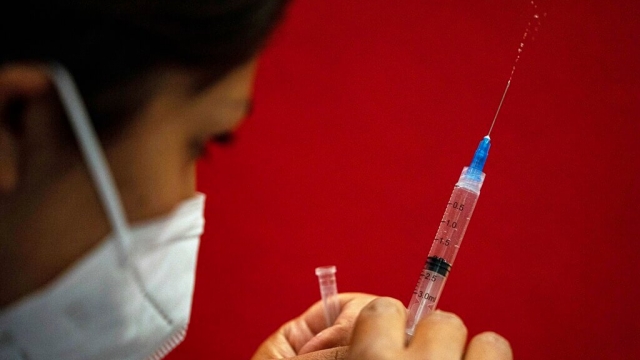With the Biden administration set to end the public health emergency for COVID-19 on May 11, there are questions about how accessible COVID vaccines will be to the public and how much effort will be put into developing new, more effective vaccines for COVID variants that could evade antibody protection going forward.
After the repeated mutations of Omicron-era variants, COVID-19 vaccines offer only limited protection against actually getting infected, but they still work well at preventing severe disease and death. Data is limited, but vaccines may lower the odds of coming down with disabling symptoms from long COVID.
So, how often do people need to be getting these shots?
The FDA has still not determined the schedule for COVID boosters going forward, but it has discussed recommending an annual fall booster for most Americans, similar to the flu shot. Immunocompromised Americans and people over 65 might be eligible for more boosters; the FDA is set to discuss that later in April.
As of now, the end of the public health emergency is not set to affect vaccine cost. But this year, there is likely going to be a shift on the back end, since the U.S. government won't be the one buying all of the COVID vaccines.
"What that means is that eventually that supply is going to end, and the way that vaccines will be procured is that the federal government will still purchase some for some populations," said Jen Kates, senior vice president and director of global health and HIV policy at KFF. "And we could talk about that kids — primarily poor, poor children — but the way that this will play out is buyers, insurance companies and other providers are going to negotiate with the manufacturers for those vaccines."
Kates has led the analysis of the COVID-19 health policy picture at the nonprofit health research organization KFF. She told Scripps News that since the CDC recommends the COVID-19 vaccine, both public and private insurance providers are usually required to cover it fully. But KFF also estimated that as of 2021, there were more than 27 million Americans who didn't have health insurance.
SEE MORE: Why COVID vaccine outreach is still critical in 2023
"All of a sudden, people who are uninsured aren't guaranteed a free vaccine, and the federal government doesn't have a program that guarantees it, and so that's a policy challenge," Kates said. "In addition, it is possible that some people in private insurance, depending upon the insurance they have, may may face some charges if they go out of network."
The cost structure is one thing; down the road, both the formula and even the delivery method could change. too.
The Pfizer and Moderna vaccines are built on an mRNA platform, introducing a piece of mRNA that prompts the body to make and build an immune response to the spike protein on the virus. But future vaccine efforts are exploring options including live-attenuated viruses — which is what they use for chickenpox — or inactivated viruses — the style used for flu and polio shots.
And eventually, a COVID shot might not necessarily be a shot in the arm. Studies are underway exploring other delivery methods, including mouth sprays and nasal vaccines.
Several prominent virus researchers say nasal vaccines could work especially well as a next-generation technology. The idea is that if it works well, it can generate what’s called mucosal immunity — meaning a person's body would produce mucus that could stop COVID where it commonly enters the body, preventing both infection and spread of the virus to other systems in the body.
In December, Dr. Eric Topol of Scripps Research in San Diego (which is not affiliated with Scripps News) and Dr. Akiko Iwasaki at Yale University published a letter in the journal Science asking for a government funding push to develop an effective nasal vaccine, similar to Operation Warp Speed for the original COVID vaccines in 2020.
SEE MORE: 3 years after the pandemic began, where is the science now?
"The argument for generating these mucosal vaccines is to prevent or reduce infection and transmission. The current vaccines are not very good at doing that. It does it to some extent, but they're not designed to provide mucosal immunity," Iwasaki said. "If you take an intramuscular vaccine and measure people's response in the nose or their mouth, it's very limited compared to a mucosal vaccine that really establishes these antibodies and T-cells at the site of entry."
Iwasaki has been spearheading the development of a nasal vaccine candidate that could work as a booster for people who have received mRNA vaccines. But she says it’s been slow going — in part because other than flu mist, occasionally used as a flu shot alternative, there just isn’t much precedent for nasal vaccines.
"There are newer versions that are coming out as nasal vaccines, but the experience in the field is much limited," Iwasaki said. "So some of the sort of barriers to developing these types of vaccines is to ensure the safety, obviously, and effectiveness of the vaccine as well as, you know, what kind of formulations we want to deliver, what device we will use. There are all kinds of variables that need to be dealt with."
So, these nasal vaccines are still a ways from being able to shut down COVID infection. But Iwasaki gave one other pitch for why they could still be a worthwhile investment.
"Another sort of process for generating these kinds of vaccines would be to prevent long COVID," she said. "Current vaccines do appear to prevent long COVID to some extent, but if we have a mucosal vaccine that prevents infection or reduces significantly the spread of the virus inside a person, that would go a long way in preventing downstream consequences, including long COVID."



